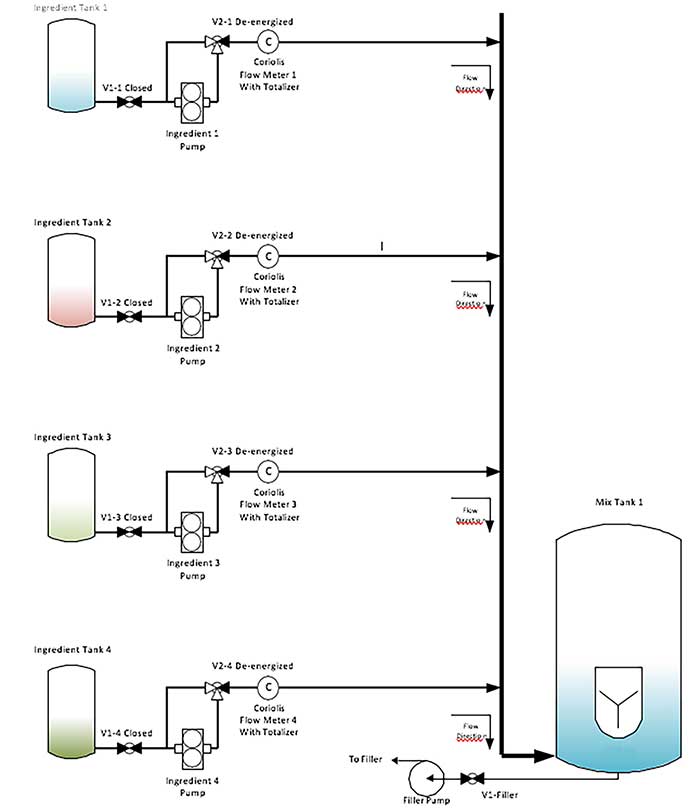Consistency is the most important trait for large-batch products.
Werner Electric Supply
04/04/2019
When a company makes a product for human consumption, all ingredients must be measured to a specific value and added at the proper time in order to achieve the ideal product.
 Image 1. Tanks of ingredient lines are being totalized (Images courtesy of the author)
Image 1. Tanks of ingredient lines are being totalized (Images courtesy of the author)- 500 pounds of water
- 250 pounds of sweetener
- 58.5 pounds of tea concentrate
- 13.5 pounds of citric acid
 The formula in Equation 1 will give the set point multiplier and determine the ingredients used per hour:
The formula in Equation 1 will give the set point multiplier and determine the ingredients used per hour:
- 121.7 pounds of water [0.2433 x 500 pounds = 121.7 pounds per hour]
- 60.8 pounds of sweetener [0.2433 x 250 pounds = 60.8 pounds per hour]
- 14.2 pounds of tea concentrate [0.2433 x 58.5 pounds = 14.2 pounds per hour]
- 3.3 pounds of citric acid [0.2433 x 13.5 pounds = 3.3 pounds per hour]
- 0.0338 pounds of water
- 0.0168 pounds of sweetener
- 0.00394 pounds of tea concentrate
- 0.000916 pounds of citric acid
- a hard copy documenting the recipe, ingredients, time, date, operator, etc.
- a batch number, which allows each batch to be traced
- a batch report explaining how things ran during the process

